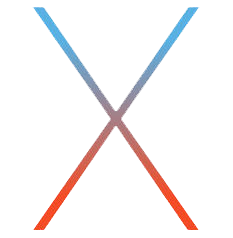Apple operating system history
Listed below are the important events in history relating to Apple operating systems, including release dates and related information.
1978
In June 1978, Apple introduced Apple DOS 3.1, the first operating system for the Apple computers.
1984
Apple introduced System 1 in 1984.
1985
Apple introduced System 2 in 1985.
1986
Apple introduced System 3 in 1986.
1987
Apple introduced System 4 in 1987.
1988
Apple introduced System 6 in 1988.
1991
Apple introduced System 7 operating system on May 13, 1991.
1995
Apple allowed other computer companies to clone its computer by announcing it licensed the Macintosh operating system rights to Radius on January 4.
1997

Apple bought NeXT Software Inc. for $400 million and acquired Steve Jobs, Apple co-founder, as a consultant.
Apple introduced macOS 8 in 1997.
1999
Apple introduced macOS 9 in 1999.
Apple released macOS X Server 1.0 on March 16, 1999.
2001

Apple introduced macOS X 10.0, code-named Cheetah, and became available on March 24, 2001.
Apple introduced macOS X 10.1, code-named Puma, and became available on September 25, 2001.
2002
Apple introduced macOS X 10.2, code-named Jaguar, and became available on August 23, 2002.
2003
Apple introduced macOS X 10.3, code-named Panther, on October 24, 2003.
2004
Apple introduced macOS X 10.4, code-named Tiger, at WWDC 2004 on June 28, 2004. The operating system was released for everyone on April 29, 2005.
2007
Apple introduced macOS X 10.5, code-named Leopard, on October 26, 2007.
2009
Apple introduced macOS X 10.6, code-named Snow Leopard, at WWDC 2009 on June 8, 2009. The operating system was made available to everyone on August 28, 2009.
2010
Apple introduced macOS X 10.7, code-named Lion, at the "Back to the Mac" event on October 20, 2010. The operating system was later released on July 20, 2011. New features included AirDrop, Gatekeeper, and many more.
2012
Apple released macOS X 10.8, code-named Mountain Lion, on July 25, 2012.
2013
Apple introduced macOS X 10.9, code-named Mavericks, at WWDC 2013 on June 10, 2013. The operating system would be made available to everyone on October 22, 2013.
2014
Apple introduced macOS X 10.10, code-named Yosemite, at WWDC 2014 on June 2, 2014. Yosemite was later released on October 16, 2014. The operating system was made available to everyone on October 16, 2014.
Apple introduced Force Touch, a haptic feedback system for macOS. Simultaneously, they launch a similar feedback system for iOS called 3D Touch.
2015
Apple introduced macOS X 10.11, code-named El Capitan, at the WWDC 2015 event on June 8, 2015. The operating system was made available to everyone on September 30, 2015.
2016
Apple introduced macOS 10.12, code-named Sierra, at the WWDC 2016 event on June 13, 2016. Apple also announced that "Mac OS" would now be called "macOS." The operating system was made available for everyone on September 20, 2016.
2017
Apple introduced macOS 10.13, code-named High Sierra, at WWDC 2017 on June 5, 2017. The operating system was made available to everyone on September 25, 2017.
2018
Apple introduced macOS 10.14, code-named Mojave, at WWDC 2018 on June 4, 2018. This version introduced a feature that turns the background to black and text to white. Dark Mode is easier on users' eyes at night, reducing eye strain. The operating system was made available to everyone on September 24, 2018.
2019
Apple introduced macOS 10.15, code-named Catalina, at the WWDC 2019 event on June 3, 2019.
Apple introduced macOS X 10.15, code-named Catalina, at the WWDC (Worldwide Developer Conference) on June 3, 2019. The operating system was made available to everyone on October 7, 2019.
2020
Apple introduced macOS 11, code-named Big Sur, at WWDC 2020 on November 12, 2020.
2021
Apple introduced macOS 12, code-named Monterey, at the WWDC 2021 event on October 25, 2021.
2022
Apple announced macOS 13, code-named Ventura, during the keynote speech at the WWDC 2022 conference on June 6, 2022. The operating system became available for everyone on October 24, 2022.
2023
Apple macOS Sonoma was released on September 26, 2023.
